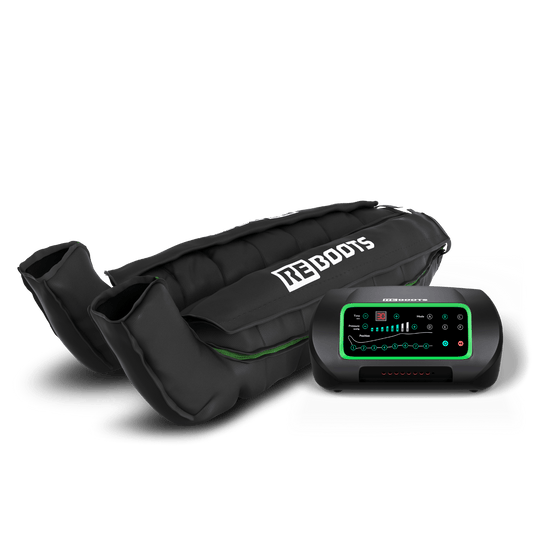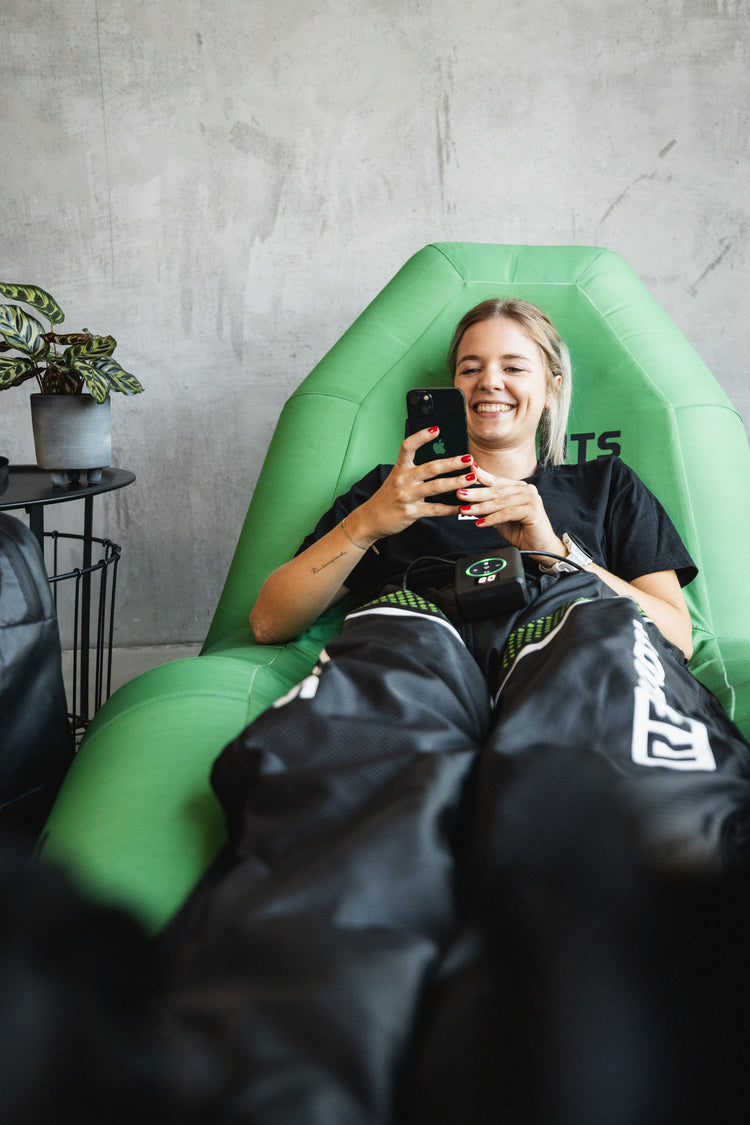Training brings progress – but true performance improvement happens during recovery.
In professional sports, regeneration is already considered the fourth discipline: It determines how quickly athletes can perform again and how consistently they can train.
Here we show you 5 recovery hacks from professional sports that you can easily integrate into your daily routine – for smarter training and faster recovery.
Active recovery instead of rest – movement as a booster
Stagnation is not recovery – movement is the true key. Instead of completely resting after an intense session, professional athletes rely on active recovery. This means: light movement as a form of "cool down" like cycling, swimming, walking, or mobility training to keep the body gently moving.
This activity promotes circulation and helps the body break down metabolic products after exertion. The result: muscles feel more relaxed without new training stress.
There are examples from almost every discipline – from easy rolling in cycling to regenerative technique training in triathlon. The principle remains the same: less intensity, more circulation.
Cold and heat applications are integral parts of modern recovery routines. Cold helps with cooling down after training, while heat promotes relaxation and flexibility – depending on the phase and need.
Targeted cold & heat stimuli
Compression massage & Recovery Boots
Hardly any tool has established itself in professional sports like Recovery Boots.
They work with intermittent pneumatic compression (IPC) – a dynamic pressure massage that runs upwards from the feet.
This rhythmic compression stimulates the fluid and blood flow and provides a pleasantly activating feeling. In training centers, physiotherapy practices, and even in competition setups, systems like the Reboots One Pro or Reboots Go X have long been standard – both in football and in triathlon or cycling.
Many athletes use them regularly for 20–40 minutes after intense sessions to optimally structure recovery time. The best part: Recovery Boots are now mobile and easy to use – perfect for training, travel, or home use.
Sleep & Nutrition as Game Changers
Training sets the stimulus, sleep brings the adaptation – professionals know this better than anyone.
During the night, central regeneration processes are activated: cells renew, muscles build up, hormones regulate.
That's why many top athletes rely on clear routines: regular sleep times, dark rooms, and tech breaks before bedtime.
Nutrition also plays a key role – especially after training.
A combination of carbohydrates, proteins, and electrolytes helps the body stabilize. Additionally, many focus on antioxidant foods and omega-3 fatty acids to support metabolism.
Sleep and nutrition are not an "extra" – they are the foundation of every successful regeneration.
Mental Regeneration & Stress Management
Physical recovery only works when the mind can also switch off.
Mental regeneration is therefore an essential part of the daily routine for professional athletes.
Techniques like breathing exercises, meditation, or visualization help reduce stress and enhance focus.
Many athletes consciously schedule these "rest windows" – whether as a short break during the day or as a fixed routine in the evening.
Those who regenerate mentally remain capable, focused, and motivated in the long run. True recovery always begins in the mind.
Conclusion: Recovery like a pro – 5 steps to better performance
Success in sports is not achieved during training, but in the recovery afterwards.
With these 5 Recovery hacks – movement, temperature stimuli, compression, sleep, and mental balance – you can specifically support your body and maintain performance in the long run.
Recovery is not a luxury, but part of the training.








